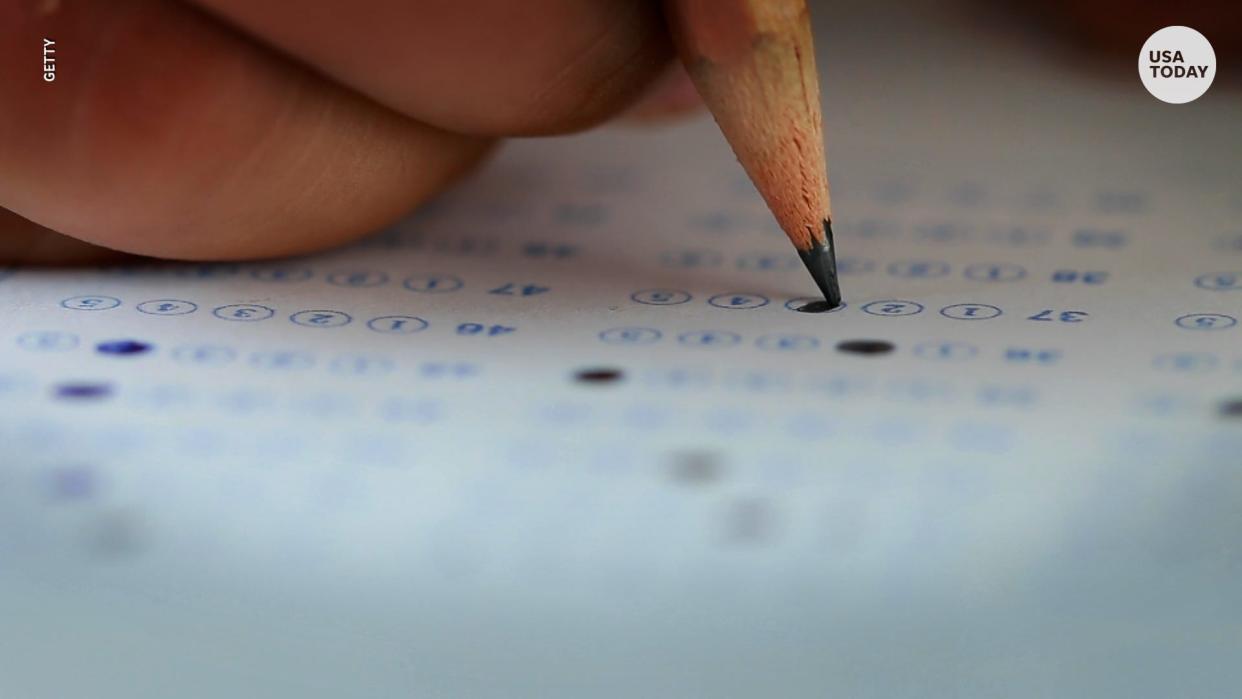College planner Price: SAT is going digital

Remember that old saying, “Nothing lasts forever?” Even diamonds degrade into graphite.
Well, there is one thing that seems to be hanging in there: the SAT. Believe it or not, it’s been around since 1926, originally as an acronym for “Scholastic Aptitude Test,” which has since been dropped, but the letters have not. Those three letters have the ability to fill every college-bound high schooler with dread. However, the winds are changing and now, so is the SAT.
What is the SAT?
The SAT is now and always has been an alleged assessment of skill levels in math and English. The format remained the same for years, even having an essay component in the English part. There is also a “mini” version of the test, the PSAT that many students take very early in their high school careers to get an idea of what the SAT is like. These tests can be taken several times over the course of a couple of years, but the number of times has been restricted by slow performance review times. After all, the exam is graded by hand.
Then along comes computers. Things were about to change, but it wouldn’t happen overnight. Over the course of several years, the assessments were assessed. The science of testing improved and certain realities emerged.
First, it was discovered that the test was biased against people of color. Where 60% of Caucasian students would get a score sufficient for most colleges, only 25% to 30% of Black, Hispanic and Latino students met the benchmark, particularly in math.
Second, until recently, taking the SAT was an absolute must for college entry, and the better the score, the better your chances of acceptance. Now, many colleges have made the SAT optional. This became a practicality during the COVID-19 shutdown, but many colleges found that it was just plain good sense. Though good scores can be a positive in those schools, SAT results are just not a must. At this time, however, most universities, especially public, still require test results.
What exactly can you expect?
Particularly in response to the inequities in the testing, big changes are on the way.
All testing will be on computers using an app, either the student’s own equipment or one provided by the testing authority if the student doesn’t own one. This will even the playing field as far as mistakes in marking or illegible responses.
Because the tests will all be digital, an adaptive style of testing where the stage changes in level of difficulty depending upon prior responses can be built in. The inequities of educational differences between regions of the United States will trigger an adjustment to the level of test questions, though a standard will still be applied. The administrators are very excited about this change.
The test day itself will be reduced from three hours to two for students. The proctoring requirements will also be greatly reduced, not only by shorter test hours, but also by the administration of the test being electronic. The need for counting, passing out, collecting and other aspects of administering a paper test will be eliminated.
Calculators will be permitted on part of the math exam. Over the years, there have been many very vocal attempts to make calculators an allowable tool. After all, who does math without a calculator anymore? But some concepts still need to be understood and those will continue to be “no calculator” questions.
Again, because the tests will be digital, results will be available almost immediately. What this means is that applicants can take one more exam before an application deadline and the results will be made available for many, if not most, college entrance considerations. This can be a huge game-changer for those who do better with more practice.
When can you expect it?
While many wish that the changes could happen tomorrow, these are very substantial modifications to a system that has been in place for nearly a century. They don’t happen quickly. These changes will be implemented first at the overseas testing centers. Since the number of test-takers is lower, it will be easier to assess any problems in a controlled environment.
The first class to take the new and improved exam in the United States will be the graduating class of 2025, almost 100 years after the very first SAT. These students are sophomores now. This means that today’s sophomores need a very different preparation strategy as far as time management and methodology are concerned.
These changes are a long time coming and set the momentum for more positive moves in the right direction. Whether you’re taking the legacy version or the new and improved, get ready. Be prepared.
Dale Price is the founder and owner of Austin-based Access College America.

This article originally appeared on Austin American-Statesman: College planner Price: SAT is going digital

